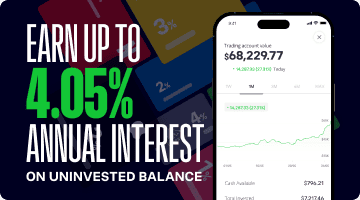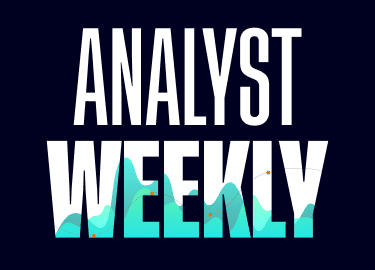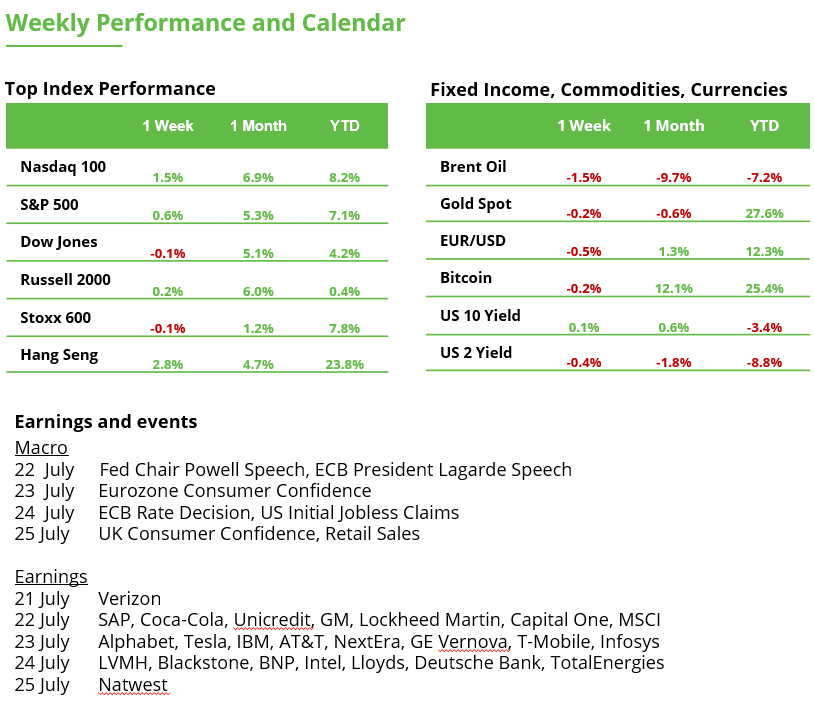Analyst Weekly, July 21, 2025
Banks Earnings: From Defense to Deployment
We have reviewed earnings calls from major US banks, including Goldman Sachs, JPM, Blackrock, Citi, Wells Fargo, BNY, BoA, MS, and PNC. The mood has notably shifted, and for the better.
To us, Banks increasingly look like levered plays on economic normalization and tech infrastructure, not just interest rates.
Here are our broad takeaways:
Deregulation:
Compliance costs will be a key metric to watch over the coming months, as they may offer the clearest signal that deregulation is starting to take hold. While regulatory changes typically take time to materialize, declining compliance spend could suggest the early impact of policy shifts, potentially providing a tailwind to earnings. We expect these changes to support the financial sector over the next 12 months. Reduced regulatory friction could also help unlock capital markets activity, including a pickup in IPOs and M&A.
Earnings transcripts from major banks reinforce this view, showing early signs that regulatory rollbacks are beginning to take effect. Compliance costs, long a drag on profitability, appear to be peaking, with some firms guiding for a decline starting in 2026. At the same time, reductions in stress capital buffers (SCBs) and expected recalibrations of the SLR and GSIB surcharges are increasing capital flexibility. Executives broadly welcomed this shift, citing improved conditions for capital deployment, deal-making, and competitiveness.
Macro to Micro:
There is a clear pivot from macro defensiveness to client-driven growth. The strongest momentum is in investment banking, structured credit, and alternative strategies.
CEO Tone: Sharply More Constructive
Executives are decisively more forward-leaning than in recent quarters. Sentiment is especially strong for businesses tied to capital markets, alternatives, and financing.
“The accelerated innovation and disruption from AI is set to create significant demand-related infrastructure and financing needs.” — Goldman Sachs CEO
“Customer behavior also changed and matched digitization… Now we have a chance to capture the value of that with the new enhanced capabilities of AI.” — Bank of America CEO
Strategic Themes Gaining Traction:
- AI and Platform Models are moving from testing to monetization.
- Capital relief (SCB, SLR, GSIB revisions) is already influencing buyback plans and ROE guidance.
- IB pipelines are rebounding, with sequential growth in M&A and IPO activity.
- Loan growth is modest but improving, with signs of re-leveraging in Prime, ABS, and middle market.
- AI adoption is real and firm-wide, banks expect measurable margin lift in 2–3 years.
- Tokenization is going institutional: major players are positioning to anchor digital asset infrastructure.
Risks: Still Present, But Downplayed:
Commercial real estate (CRE) and broader credit concerns remain, but management commentary has shifted from “watchful” to “under control.”
Investment Takeaway: In the US, we think that banks are benefiting from deregulation, tax certainty, and a scenario that may see stabilising inflation with no imminent recession (a steeper curve). After 18+ months of macro caution, banks are shifting into deployment mode, with clearer visibility on regulatory relief, rising client demand, and monetization of AI and digital infrastructure investments. From a positioning perspective, we do not see large-cap banks as just interest rate plays; they are now levered vehicles on capital markets normalization, private credit expansion, and enterprise tech adoption.
Sector Focus: Broader Financials
IPOs, Credit, and M&A Picking Up:
Capital markets activity is rebounding decisively:
- IPO issuance in H1 25 is up ~11% y/y, and more than +100% versus the lows of 2022 to 2023.
- Corporate bond issuance (IG & HY) remains strong, despite tough comps from 2024.
- M&A deal flow is steady, though deal closures remain a watchpoint.
Overall, expectations that had overshot post-election and undershot at mid-cycle lows now appear appropriately aligned with actual market activity. This normalization strengthens the case for sustained upside in financials through year-end.
Fundamentals & Valuations:
Following early Q2 earnings reports, expected earnings growth for the sector jumped from 2.7% to 7.8%, while revenue forecasts rose from 1.2% to 2.1%. With deregulation unfolding and a potentially steeper yield curve, profitability could continue to surprise to the upside. Valuations (P/B) have normalized, while ROEs remain solid, supporting the investment case.
Deregulation Tailwinds:
The deregulation story remains an important tailwind for financials over the next 12 to 24 months. Beyond enhancing profitability, it significantly improves capital flexibility, fueling share buybacks and dividends. Financials have been the second-largest buyers of their own stock, repurchasing over $190B in the past 12 months, and that number may rise as regulatory constraints ease.
One of the most impactful developments was the slashing of funding for the Consumer Financial Protection Bureau (CFPB) under the new tax bill.The CFPB is the US agency responsible for regulating consumer finance products like credit cards, auto loans, and personal lending. Cutting its funding is expected to reduce regulatory oversight and enforcement, particularly for consumer finance firms, which are already showing the strongest upward earnings revisions for 2025 and 2026.
Mag 7 Earnings Start This Week
What we are watching: whether companies, especially the big tech “hyperscalers” like Amazon, Microsoft, and Google, will keep spending heavily on AI infrastructure. This spending is part of a larger capital expenditure cycle that’s been fueling the AI boom.
So far, these companies are likely to maintain or even increase investment, especially as early signs show that AI is starting to boost profits.
A key policy angle comes from the new tax bill in the US, which includes business tax incentives aimed at encouraging companies to bring forward (pull forward) their spending into 2025, helping to offset the cost of new tariffs.
Historically, tax breaks like full expensing (where companies can immediately deduct the cost of investments) have helped industrial companies, and we think it could also benefit software firms this time, especially those building or selling AI tools.
- Tesla & Alphabet (July 23): Focus on vehicle delivery trends and cloud growth.
- Meta (July 30): Look for details on AI/data center investments and user ad revenue.
- Apple & Amazon (July 31): iPhone demand and AWS profitability + guidance.
- Nvidia (Aug 27): Investor attention on Blackwell chip rollout and export restrictions.
- Microsoft (July 30): Azure/AI revenue momentum and margin trends.
GENIUS Act: The US Goes All-In on Stablecoins
The US has signed the GENIUS Act into law, the first major piece of US crypto legislation, setting a clear regulatory framework for the issuance and trading of stablecoins.
This long-awaited clarity opens the door for banks, asset managers, retailers, and payment processors to actively enter the stablecoin space without regulatory ambiguity.
The law comes at a pivotal moment: stablecoins have become the core liquidity layer connecting crypto and traditional finance, enabling fast, dollar-denominated transactions without friction.
Analysts should watch three potential implications:
- Capital flows into regulated stablecoin infrastructure may accelerate, potentially unlocking trillions in on-chain payment rails, tokenized securities, and automated finance.
- The Act reinforces Ethereum’s dominant position as the core blockchain for stablecoin issuance, due to its transparency, composability, and institutional adoption.
- The next battleground is regulatory clarity on the broader crypto market structure: tokenized securities, private equity, and custody rules are now in focus.
The GENIUS Act is not the end of the road—it’s the beginning of regulated crypto infrastructure at scale in the world’s largest economy.
Traders Eagerly Await The ECB Interest Rate Decision
The ECB will announce its interest rate decision on Thursday. No change is expected. However, the subsequent press conference with Christine Lagarde could trigger volatility in the markets. Investors are hoping for clues about the future interest rate path. Comments on trade policy, inflation risks and growth prospects will help assess how the central bank views the current situation, and whether the euro’s appreciation in recent months is justified.
EURUSD has experienced a decline since the start of July. In the middle of last week, the pair reached the fair value gap zone between 1.1543 and 1.1574. However, price action has since entered a sideways range, as buyers were held back by another zone around 1.1650. The broader uptrend remains intact, making a move toward 1.18 the most likely scenario. A break below 1.1543, however, could open the door for sellers to target previous lows at 1.1449 and 1.1373.
EURUSD in the daily chart, correction within the uptrend
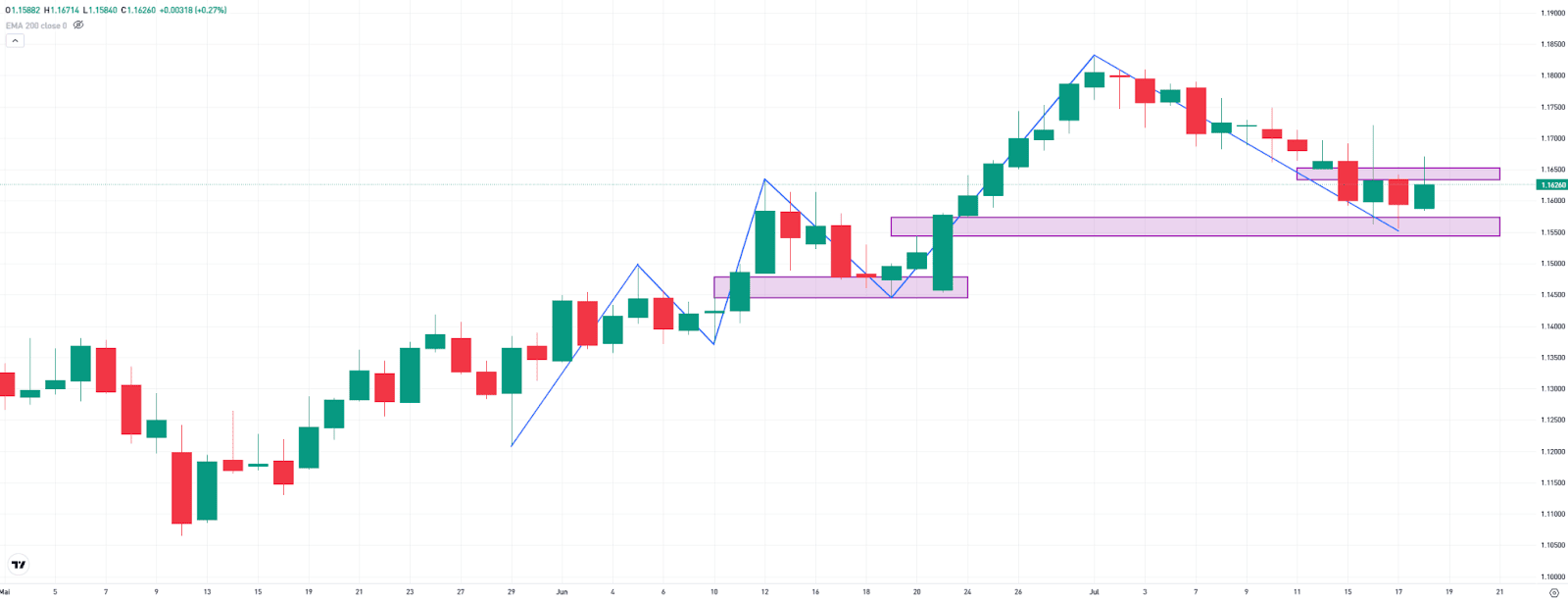
Can SAP Justify the Advance of Trust? Quarterly Results on Tuesday
The SAP stock, with its price increase last week, has provided a good setup to reach a new record high in the coming weeks; it is 7% away. However, the stock’s high valuation makes it vulnerable to short-term profit-taking. The forward P/E ratio stands at 42, significantly higher than that of peers like Microsoft, Oracle, and Salesforce.
On the other hand, SAP has consistently demonstrated strong operational performance. In addition, the forecasts for the second-quarter results are promising, and analysts see potential for an upward revision of the earnings outlook. In times of trade conflicts, SAP also benefits from a structural advantage compared to other sectors. The company does not sell hardware but instead focuses on cloud solutions and artificial intelligence, making it only indirectly exposed to the impact of tariffs.
Technical launchpad?
SAP shares ended last week up 2% at €263. After stabilizing in recent weeks, the stock saw renewed interest within a medium-term support zone. Following a strong rebound from the April low, a so-called Fair Value Gap formed – a price gap between €245 and €260. The share price fell back into this zone, where the sell-off was halted.
Before the April low, the stock showed a textbook ABC correction pattern. The current gap to the record high is about 7%. For the chances of retesting that high to improve, buyers need to push through the June high at €273 first.
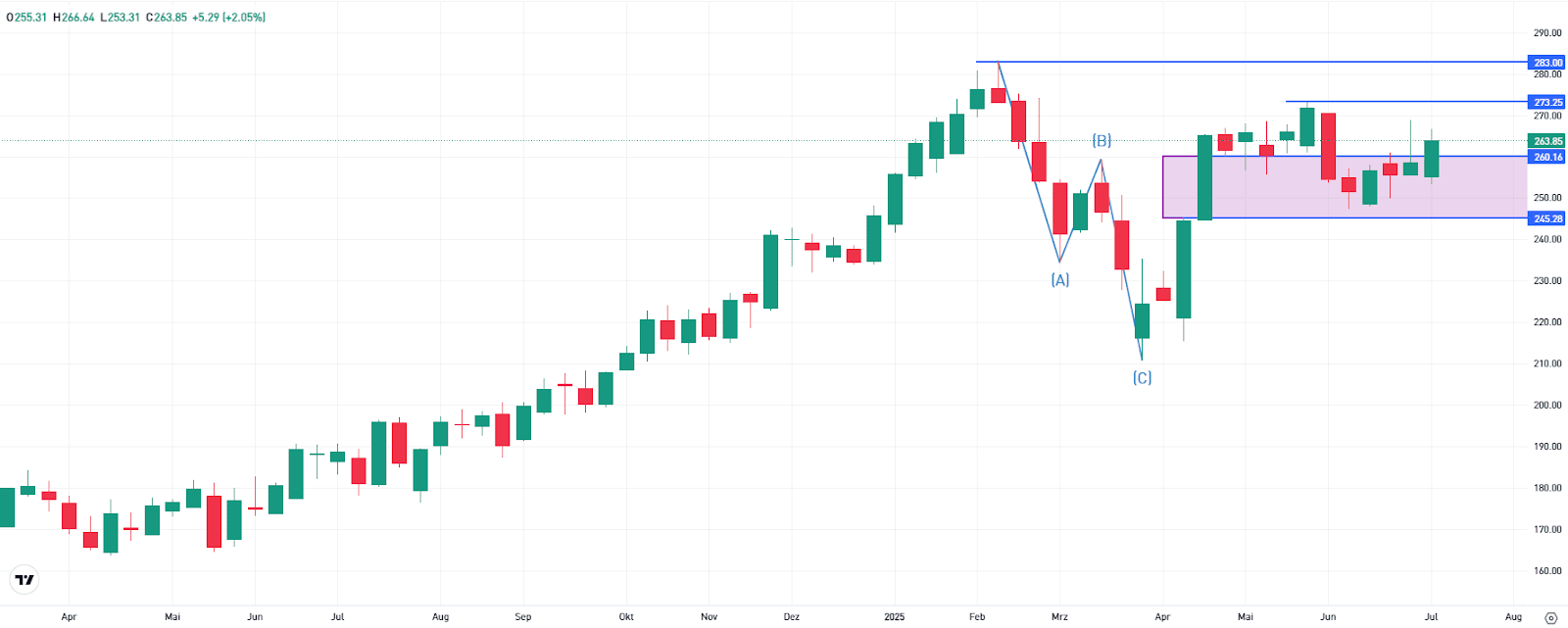
This communication is for information and education purposes only and should not be taken as investment advice, a personal recommendation, or an offer of, or solicitation to buy or sell, any financial instruments. This material has been prepared without taking into account any particular recipient’s investment objectives or financial situation and has not been prepared in accordance with the legal and regulatory requirements to promote independent research. Any references to past or future performance of a financial instrument, index or a packaged investment product are not, and should not be taken as, a reliable indicator of future results. eToro makes no representation and assumes no liability as to the accuracy or completeness of the content of this publication.

